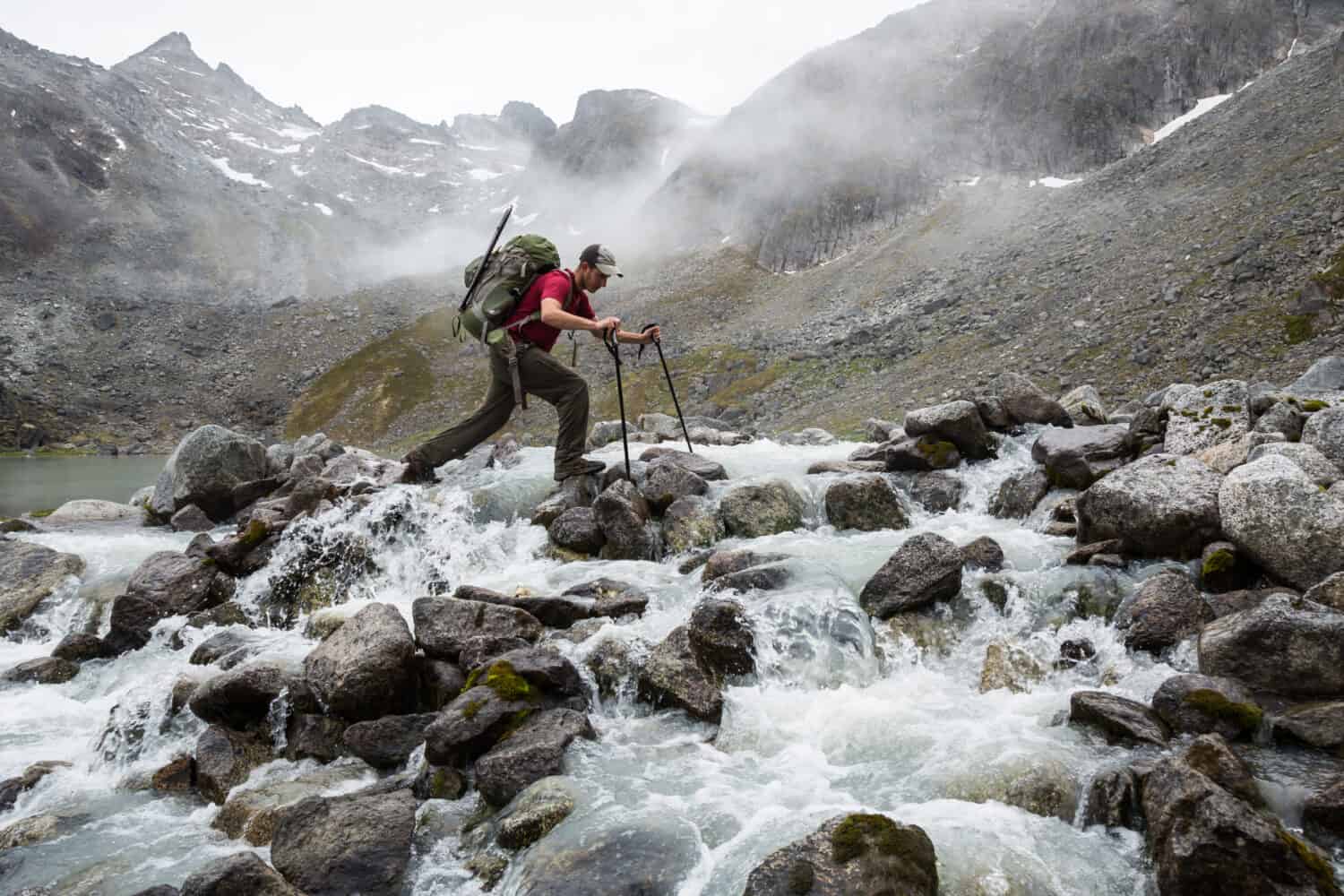As the crisp embrace of autumn descends upon the United States, there are states where the chill of winter arrives a bit early. These are the places where October brings not just falling leaves but also falling temperatures. In this article, we will uncover the 10 coldest states in the U.S. during the month of October, shedding light on their average temperatures, record-breaking cold, population statistics, and the hardy wildlife that calls these chilly regions home.
1. Alaska
First up on the list, Alaska, the largest state in the U.S., takes the crown as the coldest state in October. With average temperatures hovering around 34°F (1°C), it’s no surprise that this northern state experiences an early taste of winter. Alaska’s vastness is matched only by its breathtaking landscapes, from towering mountains to icy fjords.
Just for context, in Alaska, the lowest ever recorded temperature was at Prospect Creek in January 1971 when the mercury plummeted to a bone-chilling -80°F (-62°C). The extreme cold, while challenging for humans, is part of the rugged charm of this wilderness. Alaska is not only known for its cold climate but also its low population density. Approximately 731,000 residents spread across its immense territory, making it one of the least densely populated states. The state’s harsh winters have shaped the culture and lifestyles of its people. Here, surviving and thriving in extreme conditions is a way of life.
This cold climate is a perfect habitat for a diverse range of wildlife and flora. Grizzly bears, moose, bald eagles, and gray wolves are just a few of the resilient species that thrive in this frigid landscape. On the flora side, the state boasts an array of native plants, including the Alaska state flower, the forget-me-not. The wilds of Alaska are also home to robust forests of spruce, birch, and cottonwood trees, contributing to the state’s stunning natural beauty. The state’s wildlife and pristine wilderness draw adventurers and wildlife enthusiasts from around the world.
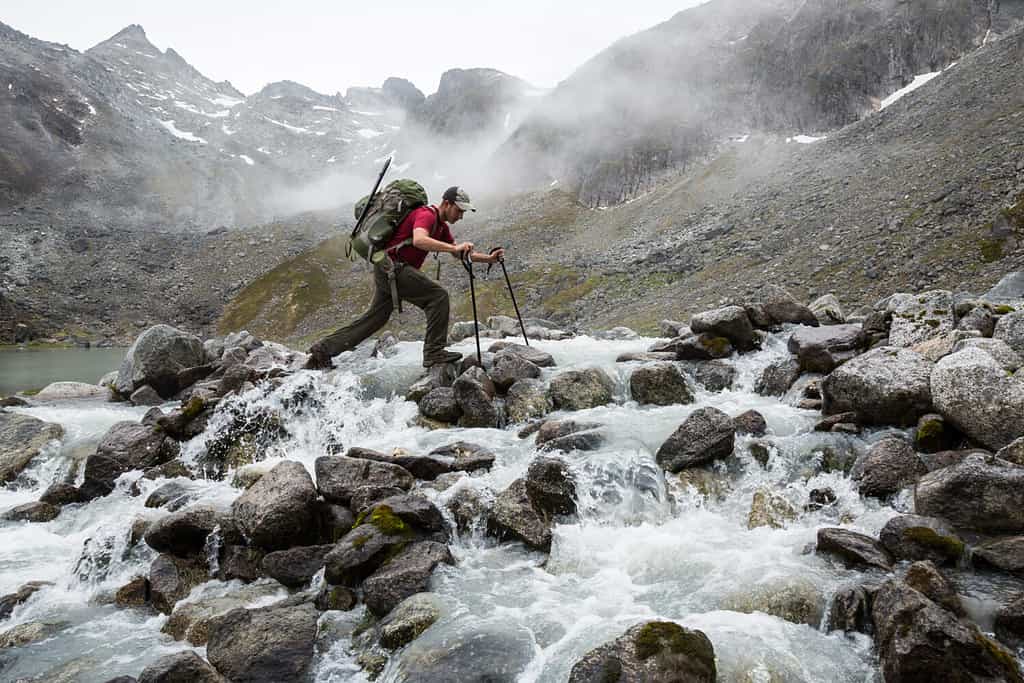
Alaska’s wildlife and pristine wilderness draw adventurers and wildlife enthusiasts from around the world.
©DCrane/Shutterstock.com
2. Montana
Montana, often called “Big Sky Country,” is no stranger to cold Octobers, with average temperatures around 43°F (6°C). The state is famous for its wide-open spaces and breathtaking natural beauty. Montana’s landscape varies from the rugged Rocky Mountains to expansive prairies.
Despite its vast land area, Montana has a relatively small population, with around 1.07 million residents. This low population density allows nature to flourish undisturbed. Montana’s cold climate has not deterred its residents but has rather forged a resilient and self-reliant spirit among them.
Montana‘s pristine wilderness provides a haven for wildlife. Here, you can encounter the elusive mountain lion, bison herds that roam the plains, and majestic elk. Montana is also a haven for a variety of flora. The state is home to a wealth of wildflowers, including the striking bitterroot, Montana’s state flower. The forests of Montana feature a mix of conifers like lodgepole pine and Douglas fir, offering habitat and sustenance for wildlife. The state’s numerous national parks and forests offer opportunities for outdoor enthusiasts to explore and connect with nature.

An old truck stations in a field at the foot of the Bridger mountain range in Belgrade, Montana.
©IslandLeigh/iStock via Getty Images
3. Wyoming
Next up, Wyoming, with its stunning landscapes and rugged beauty, experiences average October temperatures of about 45°F (7°C). The state is known for its wide-open spaces, including the famous Yellowstone National Park and Grand Teton National Park.
Wyoming is one of the least densely populated states in the U.S., home to just over 570,000 residents. The state’s cold climate and remote areas contribute to its sense of isolation and tranquility. Life in Wyoming often revolves around nature, and its residents have a deep appreciation for the great outdoors.
In terms of wildlife, Wyoming offers a diverse range of species. Its vast prairies, mountain ranges, and high plains are home to animals like elk, pronghorn antelope, and the elusive gray wolf. When it comes to flora, Wyoming features a mix of native plants adapted to its challenging climate. The state is known for its sagebrush steppe, a dominant ecosystem that sustains a variety of wildlife. Wildflowers like Indian paintbrush and lupine add splashes of color to the arid landscapes. Forested areas in the state boast a mix of pine and aspen trees, contributing to its rich biodiversity. Finally, Wyoming’s commitment to conservation and habitat preservation ensures that its wildlife populations remain robust.
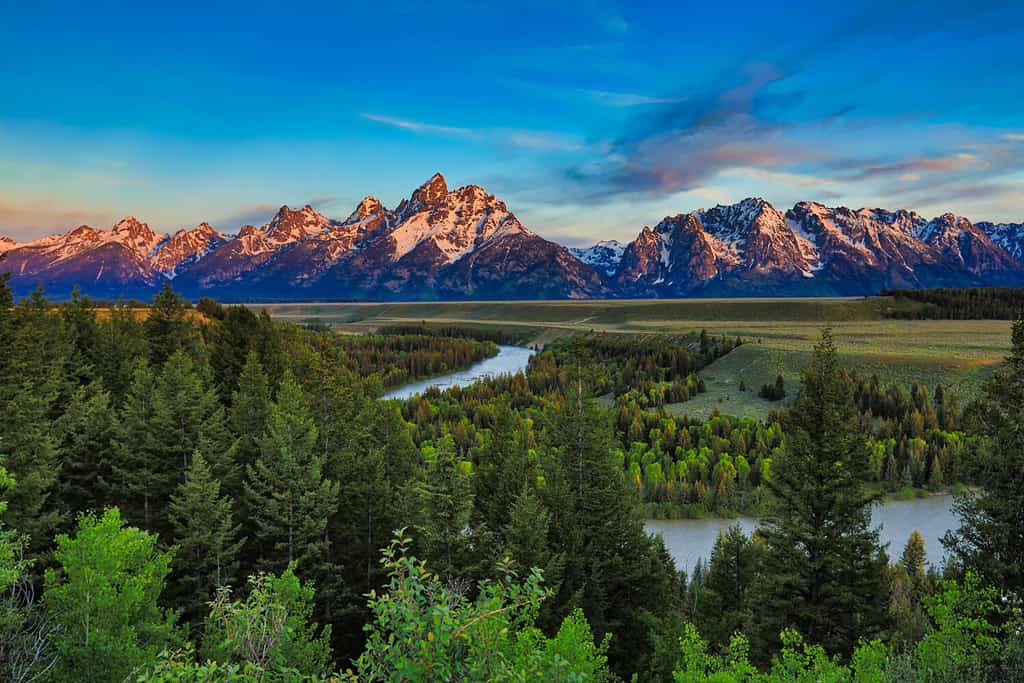
Wyoming is known for its wide-open spaces, including the famous Yellowstone National Park and Grand Teton National Park.
©aceshot1/Shutterstock.com
4. North Dakota
North Dakota welcomes October with an average temperature of around 47°F (8°C). Despite its chilly autumn weather, it’s a state with a warm and welcoming spirit. North Dakota boasts a population of approximately 770,000 people who are known for their resilience in the face of harsh winters.
North Dakota’s cold climate is home to various flora adapted to its challenging environment. Native grasses like prairie dropseed and big bluestem thrive in the state’s prairies. In forested areas along the river valleys, cottonwood and willow trees provide vital habitat for wildlife. North Dakota‘s cold climate is home to resilient species like white-tailed deer, wild turkeys, and the elusive bobcat. All in all, the state’s vast prairies and rolling hills provide ideal habitats for these creatures. North Dakota’s commitment to conservation has helped maintain healthy wildlife populations.

North Dakota’s cold climate is home to resilient species like white-tailed deer, wild turkeys, and the elusive
bobcat
.
©Cavan-Images/Shutterstock.com
5. South Dakota
South Dakota follows its northern neighbor with average October temperatures of about 49°F (9°C). It’s a state with a rich cultural heritage and a deep connection to its natural surroundings. South Dakota’s landscape ranges from the Black Hills to the expansive prairies.
With approximately 900,000 residents, South Dakota offers a mix of small-town charm and natural beauty. The state’s transition from summer to winter is gradual, allowing residents to savor the changing seasons.
South Dakota‘s prairies and Badlands are home to a variety of wildlife. Bison herds, prairie dogs, and coyotes are common sights in this part of the country. The state’s national parks and historic sites provide opportunities for visitors to immerse themselves in the unique ecosystem and history of the region.

With approximately 900,000 residents, South Dakota offers a mix of small-town charm and natural beauty.
©Jacob Boomsma/iStock via Getty Images
6. Vermont
Following, Vermont experiences brisk Octobers, with average temperatures around 50°F (10°C). This New England state is known for its picturesque landscapes, charming villages, and vibrant communities.
With a population of approximately 643,000 residents, Vermont is one of the smaller states in terms of population. Its woodlands, rolling hills, and pristine lakes provide an ideal backdrop for a relaxed and nature-oriented lifestyle.
Vermont‘s woodlands are home to white-tailed deer, black bears, and a vibrant population of migratory birds. The state’s commitment to sustainable practices and environmental conservation ensures the protection of its natural treasures.

Vermont’s woodlands are home to white-tailed deer, black bears, and a vibrant population of migratory birds.
©BackyardProduction/iStock via Getty Images
7. Maine
Maine, known for its rugged coastline and maritime heritage, welcomes October with average temperatures of about 51°F (11°C). With a population of roughly 1.36 million people, it’s a state where residents embrace the colder months and celebrate their unique connection to the sea.
Moreover, Maine’s cold climate is a haven for wildlife, including moose, harbor seals, and the iconic Atlantic puffin. The state’s rocky shores and dense forests provide diverse habitats for both land and marine species.
Finally, Maine’s strong sense of community and love for the outdoors makes it a special place for those who appreciate a life closely intertwined with nature. Whether it’s hiking in Acadia National Park or enjoying fresh lobster by the sea, Maine offers a blend of outdoor adventure and coastal charm.
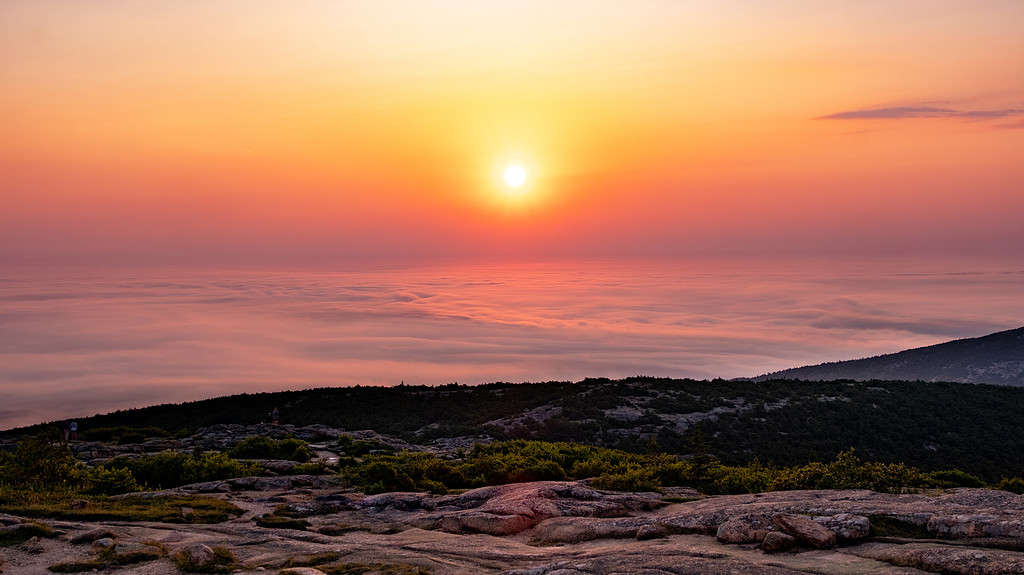
Maine’s cold climate is a haven for wildlife, including moose, harbor seals, and the iconic Atlantic puffin.
©S_Hoss/iStock via Getty Images
8. New Hampshire
With its picturesque landscapes, New Hampshire experiences average October temperatures of about 52°F (11°C). It’s a state with a population of approximately 1.37 million residents who enjoy the natural beauty of their region.
New Hampshire‘s woodlands are home to red foxes, black bears, and a diverse array of bird species. The state’s commitment to conservation and sustainable forestry practices helps maintain healthy ecosystems.
What’s more, residents of New Hampshire take pride in their state’s rich history and vibrant communities. Whether it’s exploring the White Mountains or enjoying the tranquility of its lakes, New Hampshire offers a serene and picturesque setting.
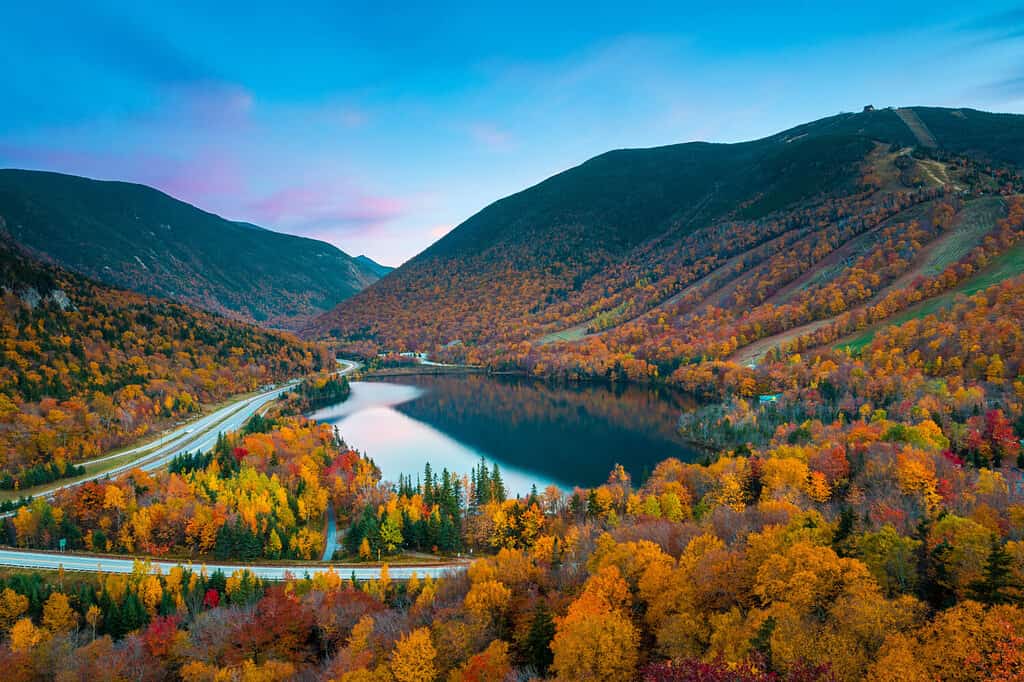
Whether it’s exploring the White Mountains or enjoying its lakes, New Hampshire offers a serene and picturesque setting.
©Winston Tan/Shutterstock.com
9. Minnesota
Next up, Minnesota, known as the “Land of 10,000 Lakes,” ushers in October with average temperatures around 53°F (12°C). It’s a state with a population of approximately 5.7 million residents who are well-prepared for the approaching winter.
Minnesota‘s cold climate is a habitat for white-tailed deer, timberwolves, and bald eagles. The state’s numerous lakes, forests, and rivers provide recreational opportunities year-round.
Furthermore, Minnesotans embrace the outdoors with ice fishing, cross-country skiing, and snowmobiling activities. The state’s vibrant cities, including Minneapolis and St. Paul, offer cultural attractions and a high quality of life.

Minnesotans embrace the outdoors with activities like ice fishing, cross-country skiing, and snowmobiling.
©Jacob Boomsma/iStock via Getty Images
10. Idaho
Finally, Idaho rounds out our list of chilly states in October with average temperatures of about 54°F (12°C). It’s a state with approximately 1.8 million residents who experience a gradual shift from summer to winter.
Idaho’s diverse landscapes are inhabited by wildlife such as mule deer, mountain goats, and the elusive wolverine. Moreover, the state’s commitment to preserving its natural beauty ensures that outdoor enthusiasts have access to pristine wilderness areas.
Idahoans appreciate their state’s rugged terrain, which provides opportunities for hiking, skiing, and exploring remote wilderness areas. The state’s close-knit communities and stunning vistas make it a unique and inviting place to call home.

Idaho’s commitment to preserving its natural beauty ensures that outdoor enthusiasts have access to pristine wilderness areas.
©Nigel May/Shutterstock.com
Conclusion
These ten states offer a glimpse into the early arrival of winter in October. While temperatures drop, the natural beauty, resilient wildlife, and vibrant communities of these regions continue to flourish. Whether it’s the stunning landscapes of Alaska, the prairies of South Dakota, or the woodlands of Vermont, each state has its unique charm, even in the chill of autumn. Finally, as residents and wildlife adapt to the changing seasons, these states remind us of the resilience of both nature and humanity in the face of colder climates.
| Rank | State | Average Temperature |
| #1 | Alaska | 34°F (1°C) |
| #2 | Montana | 43°F (6°C) |
| #3 | Wyoming | 45°F (7°C) |
| #4 | North Dakota | 47°F (8°C) |
| #5 | South Dakota | 49°F (9°C) |
| #6 | Vermont | 50°F (10°C) |
| #7 | Maine | 51°F (11°C) |
| #8 | New Hampshire | 52°F (11°C) |
| #9 | Minnesota | 53°F (12°C) |
| #10 | Idaho | 54°F (12°C) |
Thank you for reading! Have some feedback for us? Contact the AZ Animals editorial team.

